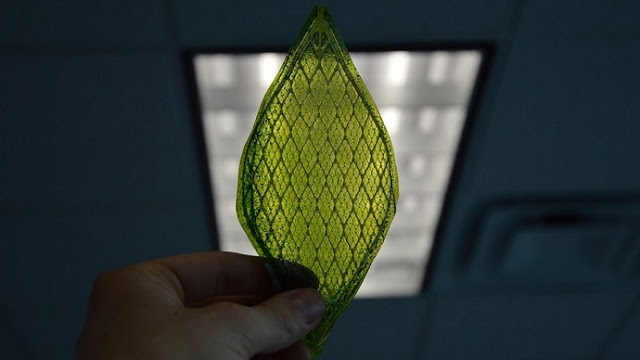 |
| Image by Julian Melchiorri/Royal College of Art |
Melchiorri started his “Silk leaf project” for his Innovation Design Engineering course at RCA in collaboration with the silk lab of Tufts University. The leaf consists of a matrix made using silk protein with chloroplast suspended in it. The silk fibres are used for extracting silk protein for the synthetic leaf. Melchiorri said silk protein is excellent material that can be used for stabilization of the molecules. He placed chloroplasts in the silk protein after extracting it from the plant cells. Just like the real leaves, Melchiorri’s leaf requires a little water and light in order to produce oxygen. It is the first biological leaf made by human. Its light – weight and consumes very less energy.
Melchiorri’s idea behind developing this leaf was to use nature’s efficiency in human environment. Initially he created this material for illuminating the house and at the same time for producing oxygen. This project is scalable for a larger use – be it outdoors or indoors. The air can be absorbed from outside, passed through these leaves and pass this oxygenated air inside.
Citation:
http://www.julianmelchiorri.com/Silk-Leaf
This Science/Research article on Silk Leaf has been contributed by Chintha Sai Bhargav Reddy who is Integrated M.Sc Chemistry student at Central University of Tamilnadu, India.




















